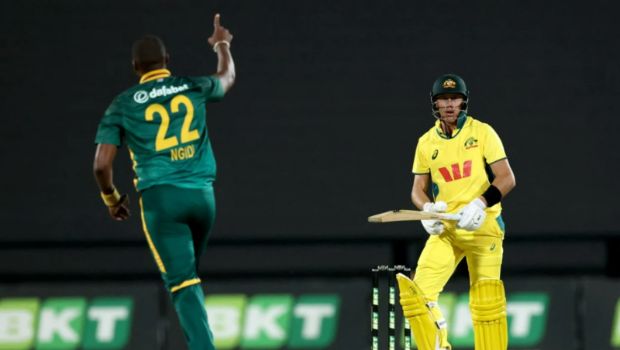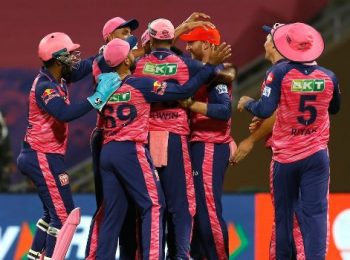A three-match ODI series between hosts Australia and South Africa that had the potential to be a close contest ended up being rather one-sided, with the visiting team emerging triumphant 2-1 to make it five straight bilateral ODI series wins over the defending World Cup winners.
A transitional Australian side – led by Mitchell Marsh and missing Pat Cummins and Mitchell Starc – was beaten by 98 runs and 84 runs to surrender the series in straight games, and then smashed South Africa by a whopping 276 runs in the dead rubber.
That’s three one-sided results in a row. Not what the ODI format, already weakened significantly over the past few years, needs to keep it relevant.
While there are more than two years for the next ODI World Cup, and factoring in the absence of regular captain Cummins and pace spearhead Starc, this was a limp performance from Australia before the last match. Struggling with the massive vacancies created by the retirements of Steve Smith and Glenn Maxwell, Australia struggled to chase targets of 297 and 278 in the first two matches and then in the third, when South Africa fielded their weakest bowling attack in years, the top three made merry with centuries as a massive total of 431/2 was posted.
Neither team had played an ODI since they each bowled out at the semi-final stage at the ICC Champions Trophy in March – Australia after losing to India, South Africa to New Zealand – but only one looked rusty in this series. In fact, South Africa appeared at ease in the format despite a steady diet of T20I cricket leading into these three ODIs.
The bowling, in particular, was their standout feature. The blow of losing Kagiso Rabada just before the first ODI was softened by five-wicket hauls to Keshav Maharaj in the first match and Lungi Ngidi in the second, as the series was stitched up 2-0. Maharaj, hurt by being snubbed from South Africa’s T20I squad, claimed his maiden five-for in ODIs with a masterful spell that triggered Australia’s collapse in the first match.
As the series moved from Cairns to Mackay, it was Ngidi who delivered a decisive performance of 5/42. His strikes included the big wicket of Josh Inglis (87 off 74 balls) and then Marnus Labuschagne and Aaron Hardie as Australia lost steam in their chase.
To get two senior bowlers to perform like that eased the pressure on the likes of Wiaan Mulder, Nandre Burger, who had played five ODIs before this series, and the two rookie spinners in Prenelan Subrayen, who made his debut in Cairns, and Senuran Muthusamy, with the experience of two ODIs before he got his chance in Mackay.
The 276-run loss in the dead rubber will sting South Africa, but overall they ticked a few boxes in this series win. They will struggle with a couple holes created in the batting lineup on the road to a home World Cup in 2027, but their fans will hope this unit is on the right track.
Thanks to their respective centuries in the last ODI, the trio of Marsh (206), Head (175) and Cameron Green (156) finished as the series’ top three run-getters, but the overall failure of Australia’s batting in the series has given the selectors plenty to chew on. The return of Cummins and Starc will boost this team, but who are the batting reserves with an eye on the 2027 World Cup?
Since last November, Australia have won just two ODIs – one against England in the Champions Trophy, and now on Sunday in Mackay – while losing bilateral series to Pakistan, Sri Lanka and now South Africa.



























